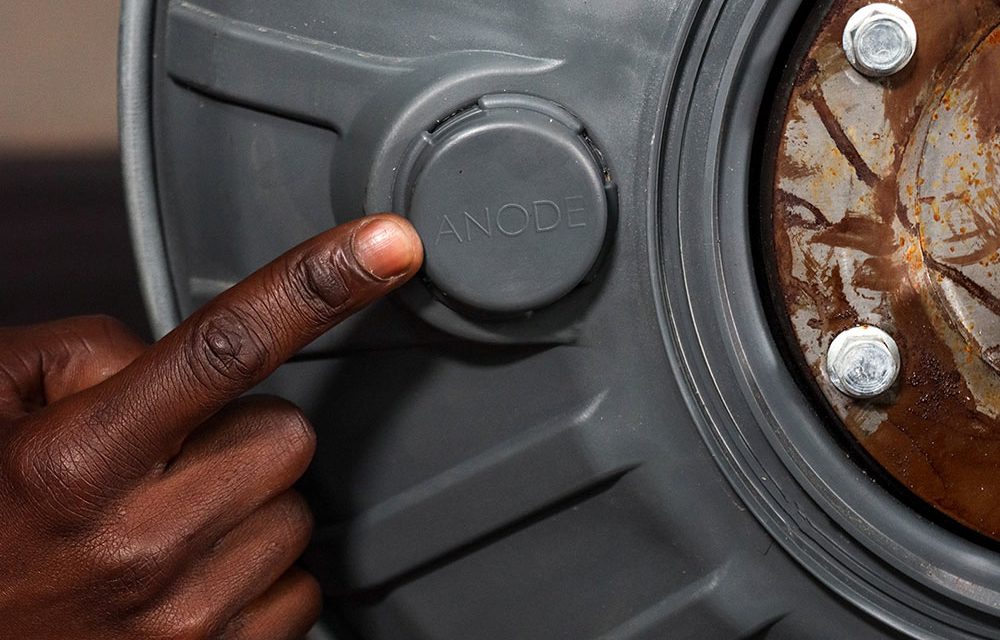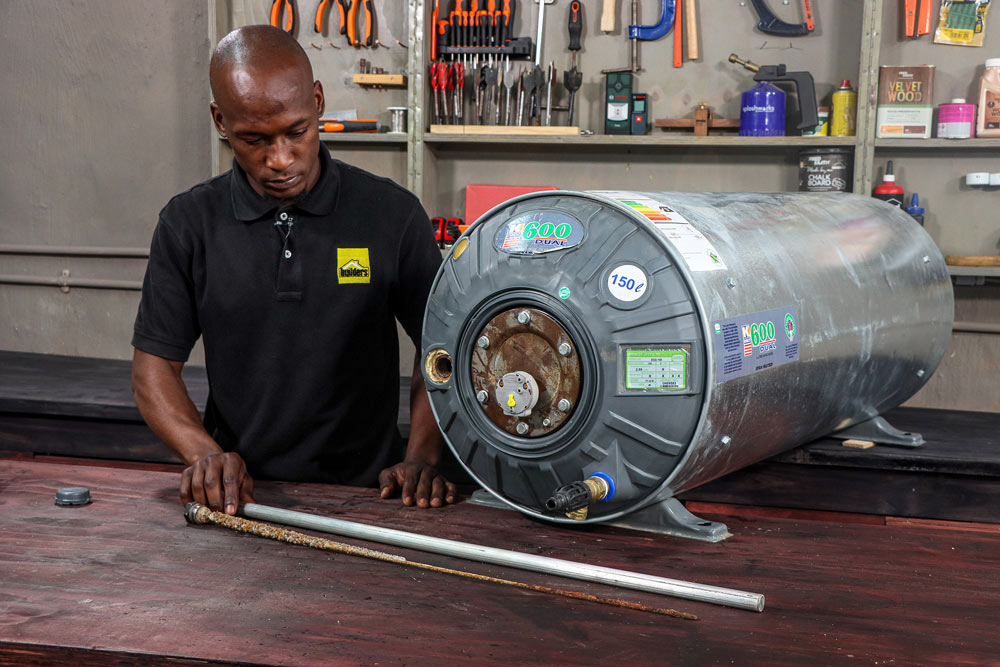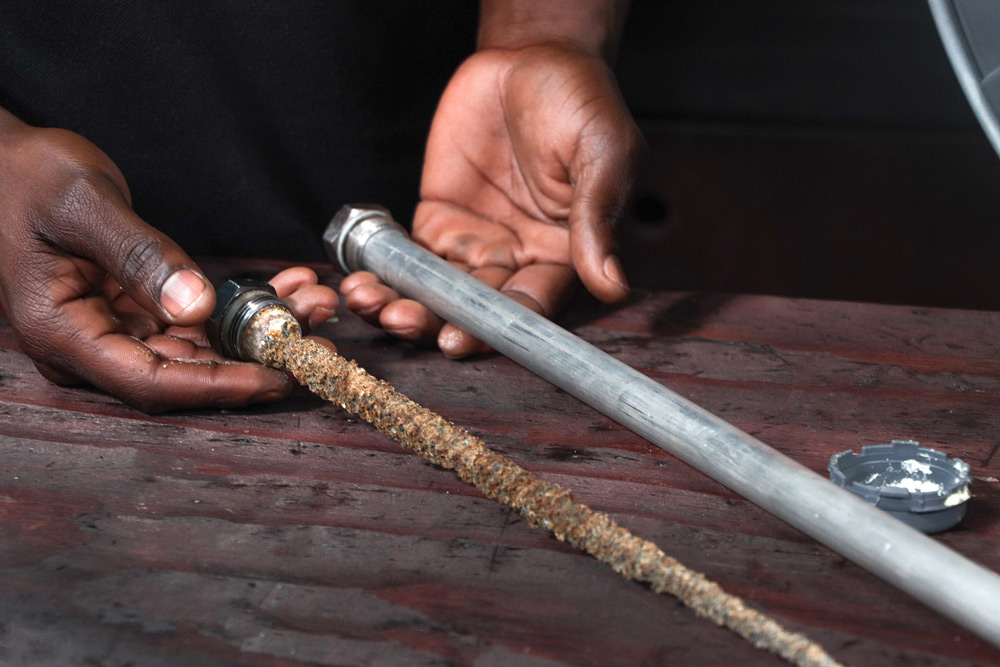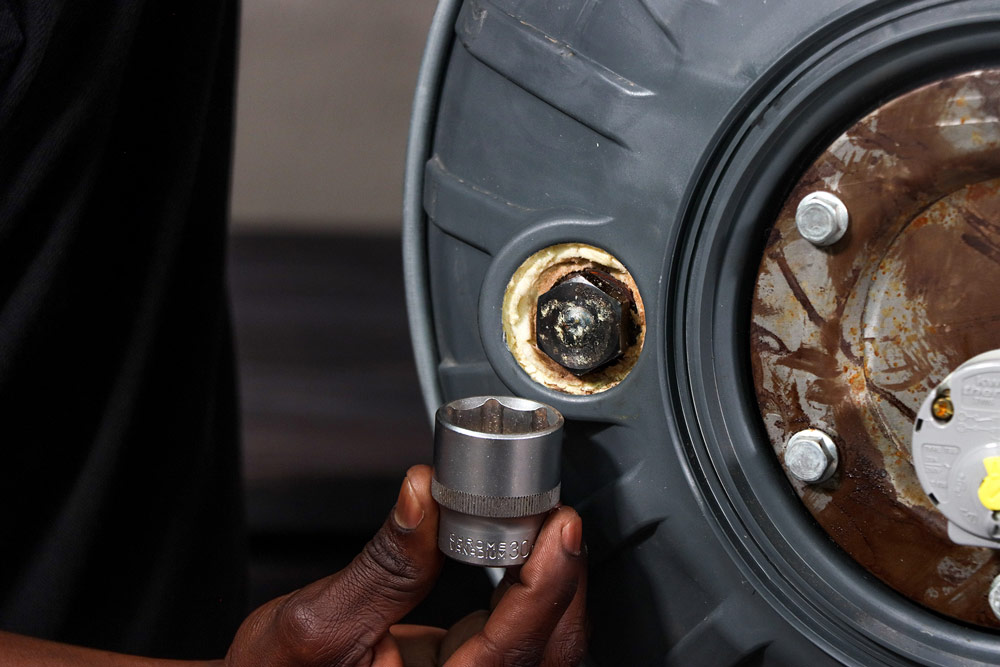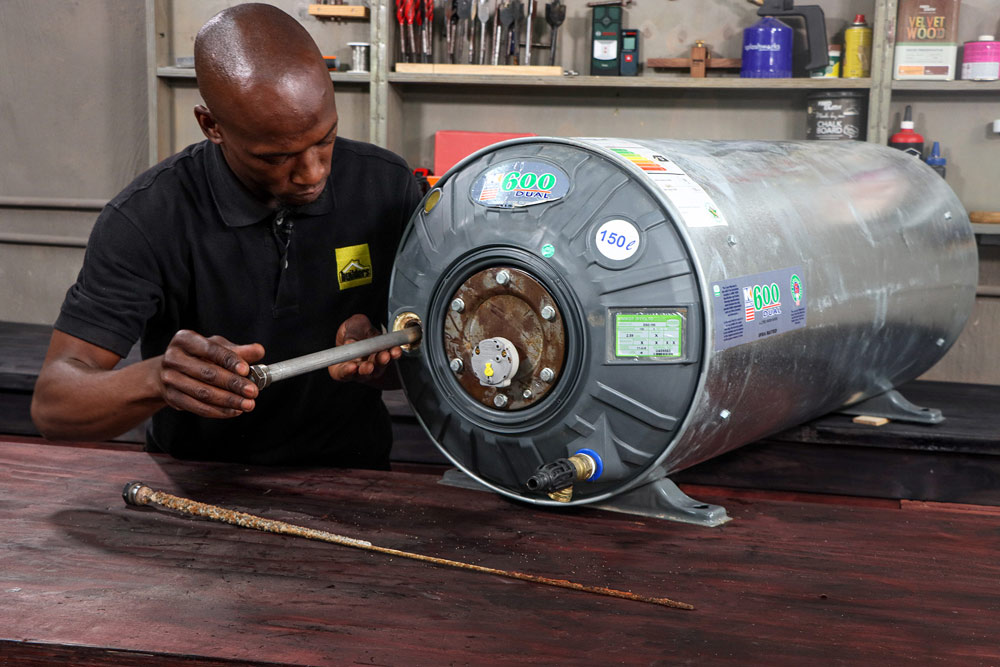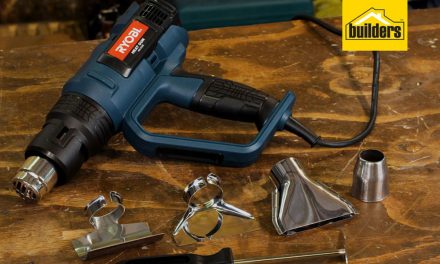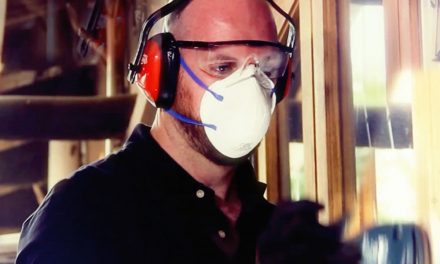Replacing a geyser’s sacrificial anode can prevent a burst geyser and a flooded home.
Most of us never think about our geyser until it stops working, leaks or bursts. (Or when the electricity bill arrives and you realise you should turn down the geyser to save money!). Instead, we should actually be inspecting our geyser every now and again, including checking the sacrificial anode and replacing it if necessary.
So what is a ‘sacrificial anode’, what does it do and why does it need to be replaced?
The sacrificial anode is an essential component of your geyser – a long metal rod usually made of a soft metal such as magnesium or aluminium. It extends into the tank’s interior and attracts – through an electrochemical process – particles of iron, limescale and other minerals present in the water. Instead of these minerals corroding the inside of the tank, the rod is designed to corrode and be ‘sacrificed’, hence the name ‘sacrificial anode’. If the anode was not present. The inside of the tank would corrode and potentially lead to a burst geyser and all the associated problems. Anodes should be checked every year or second year – the rate at which they corrode depends on the mineral content of your water.

